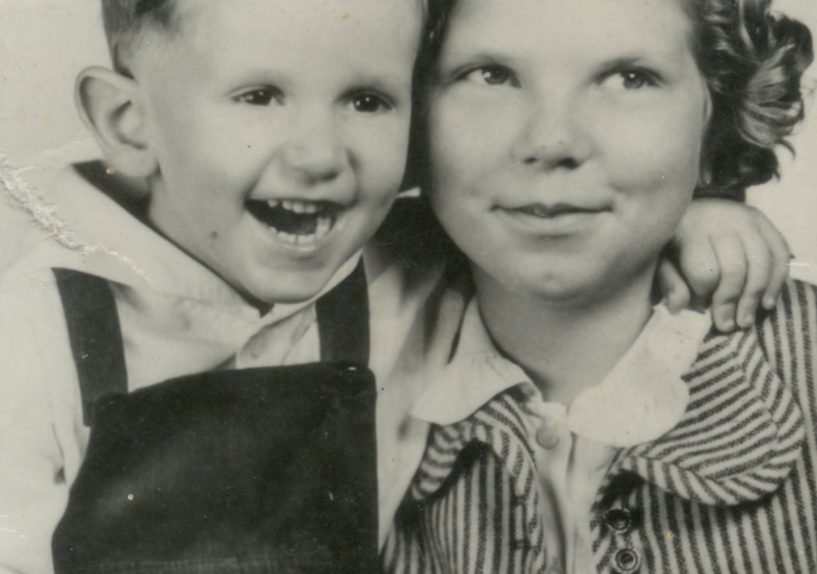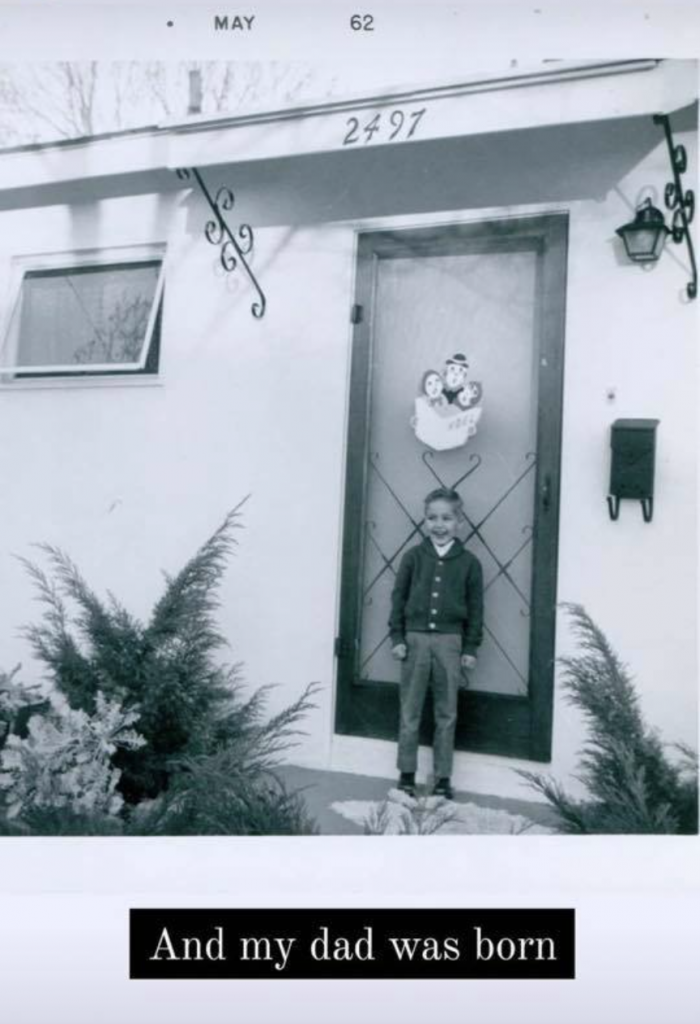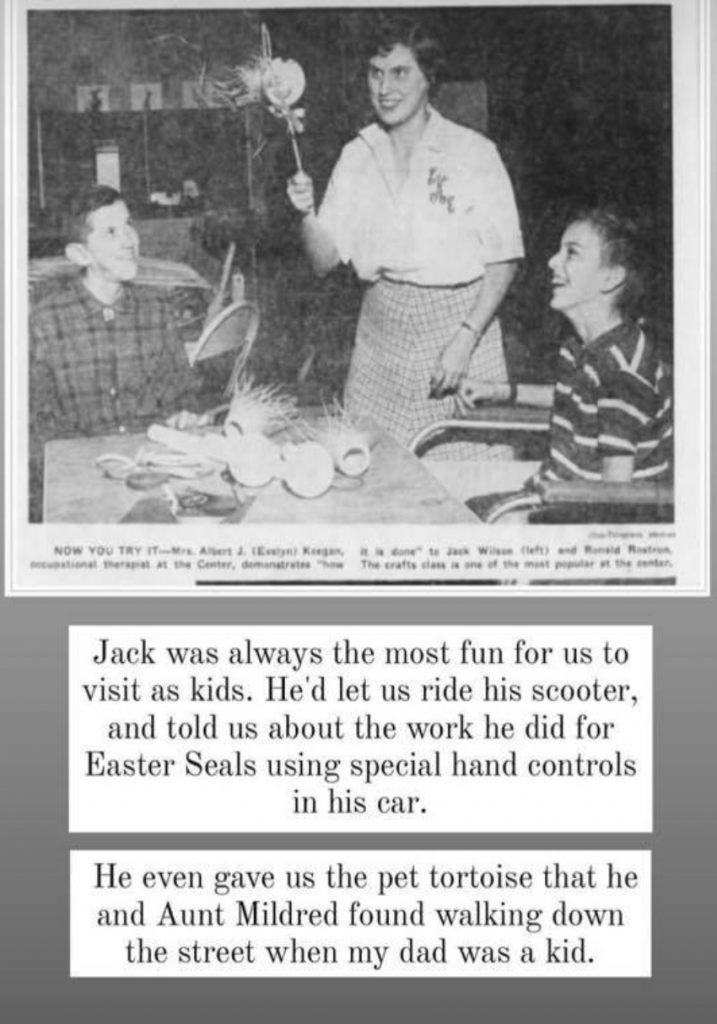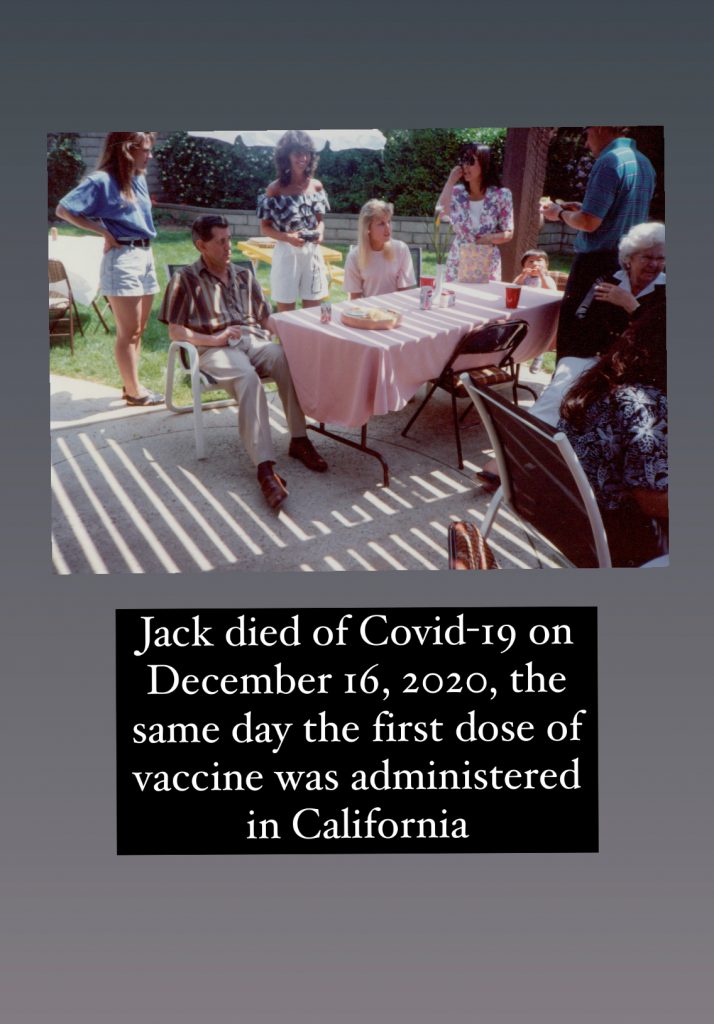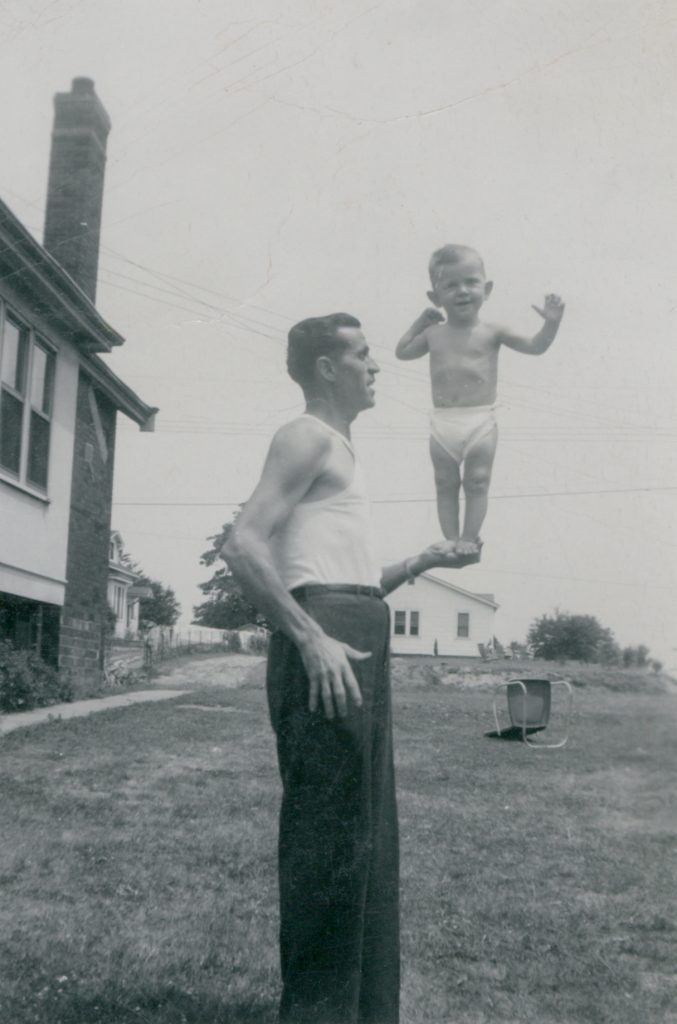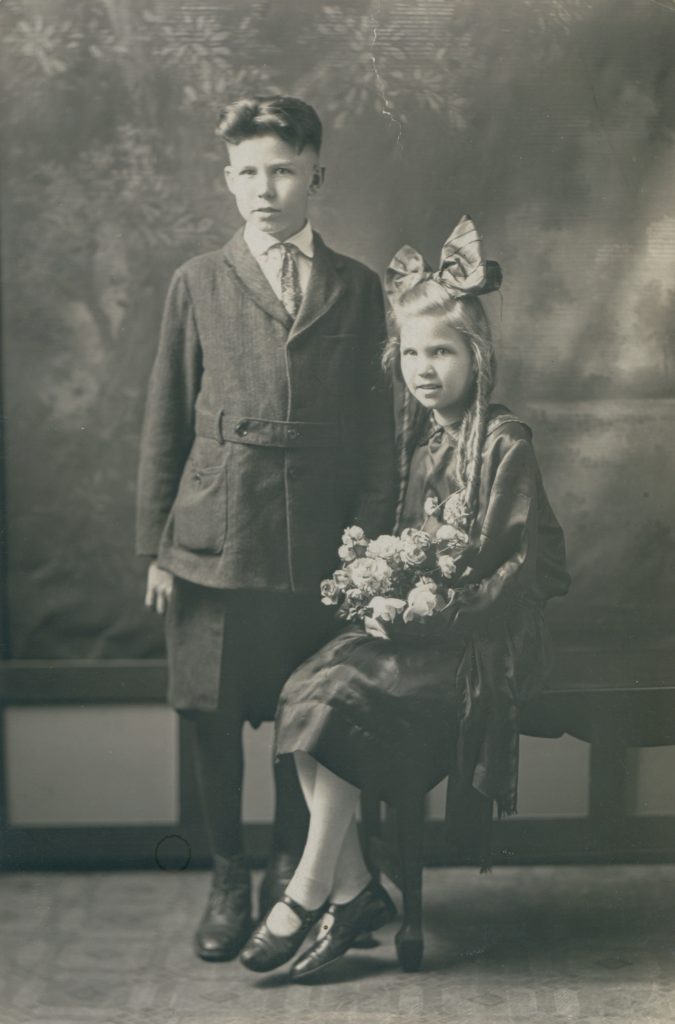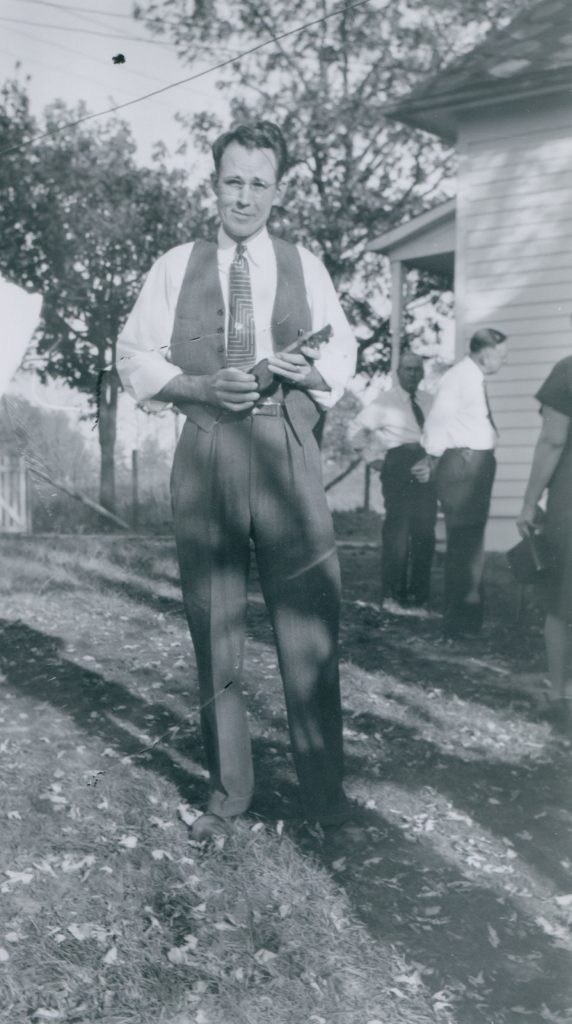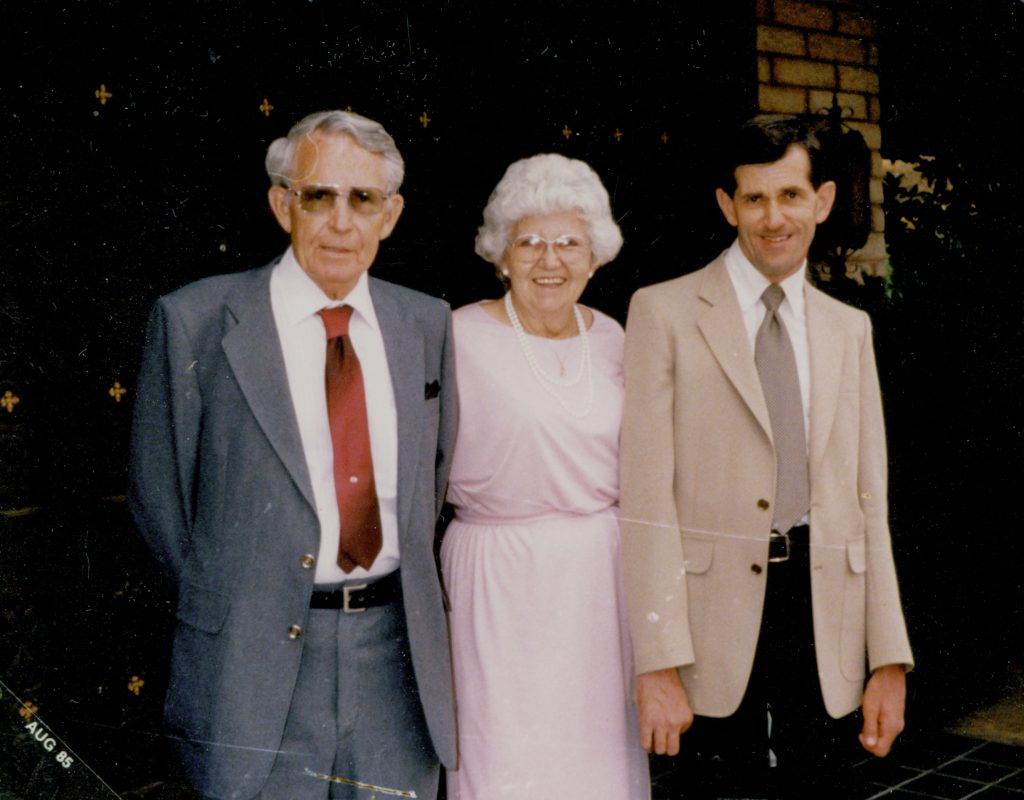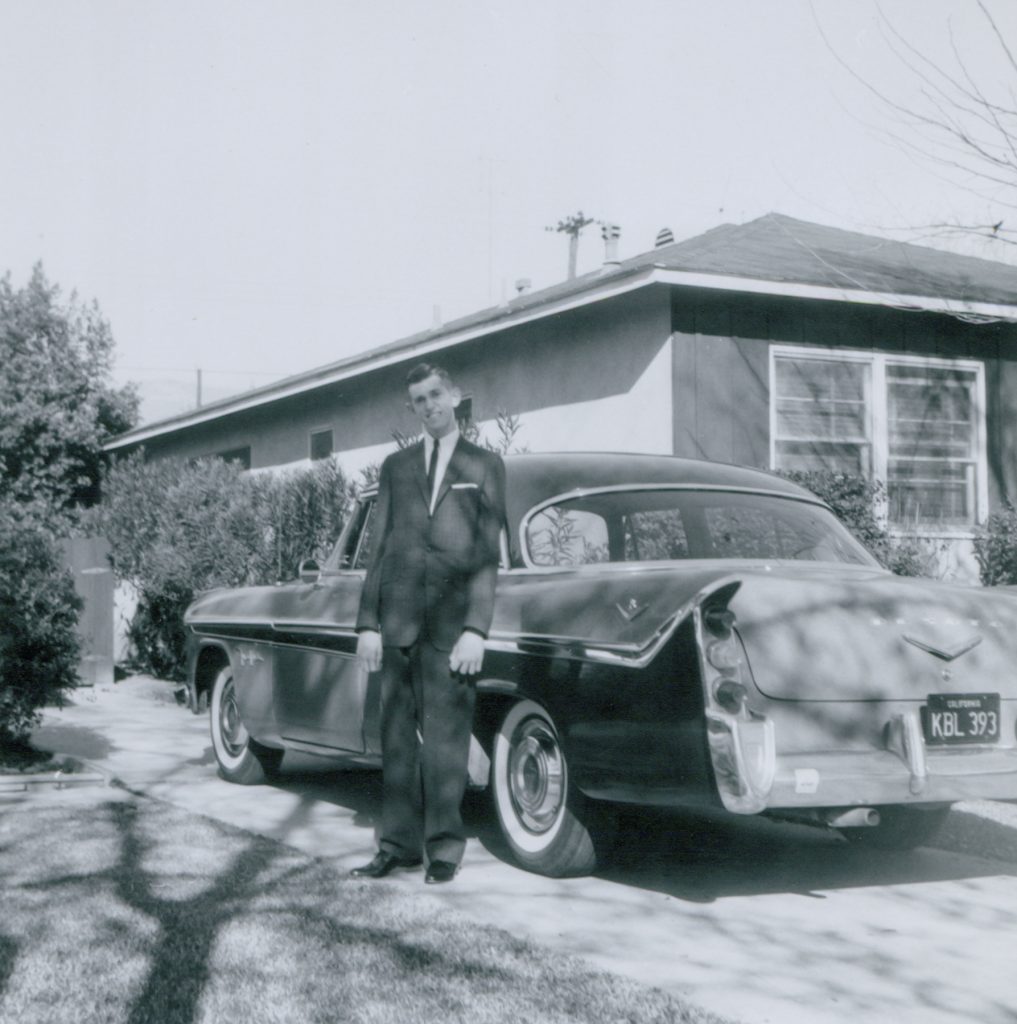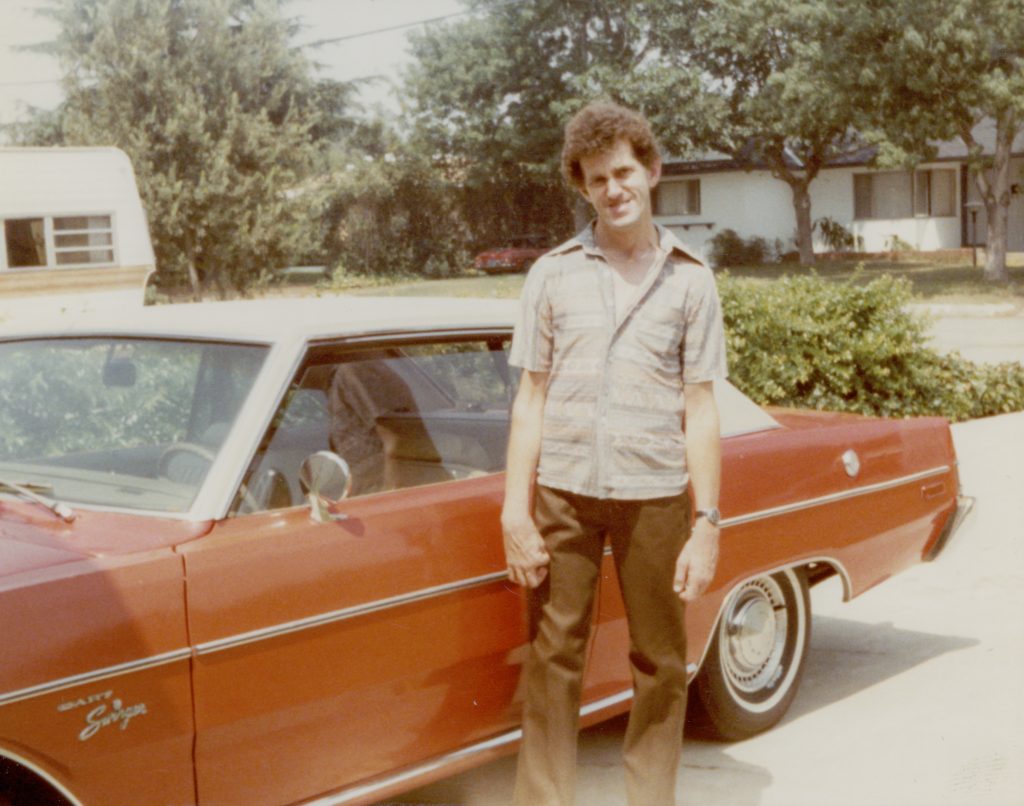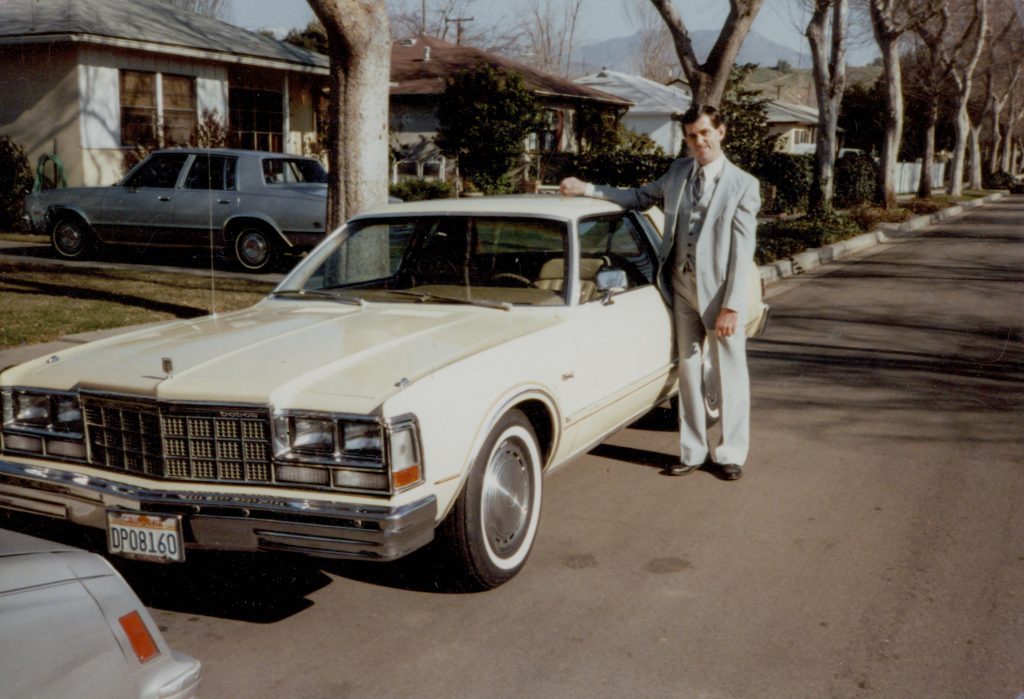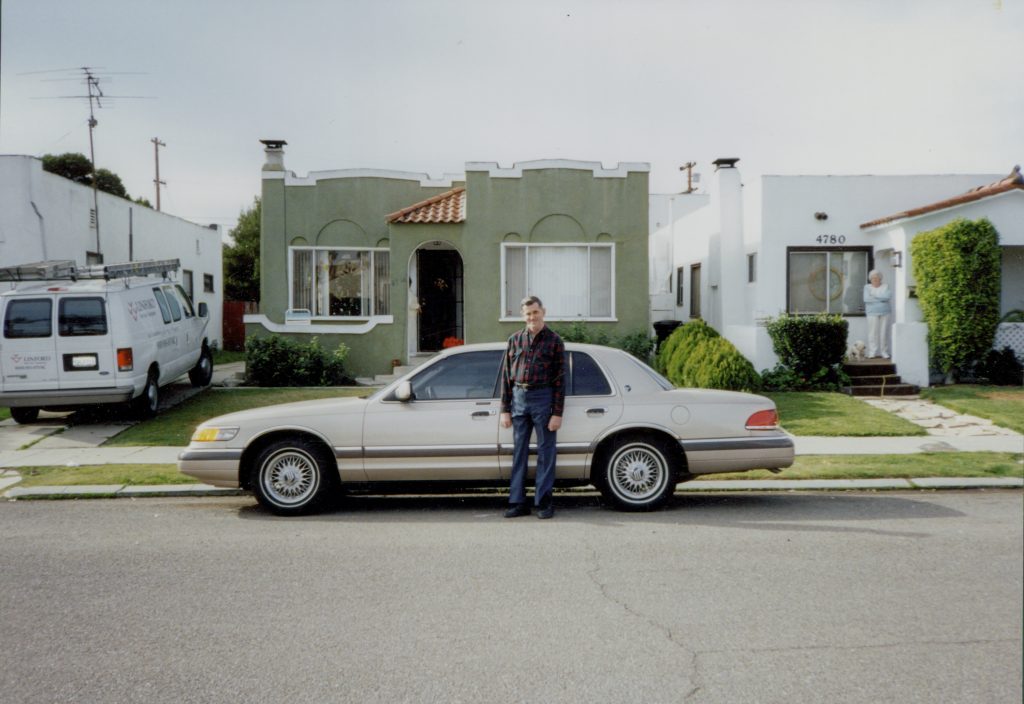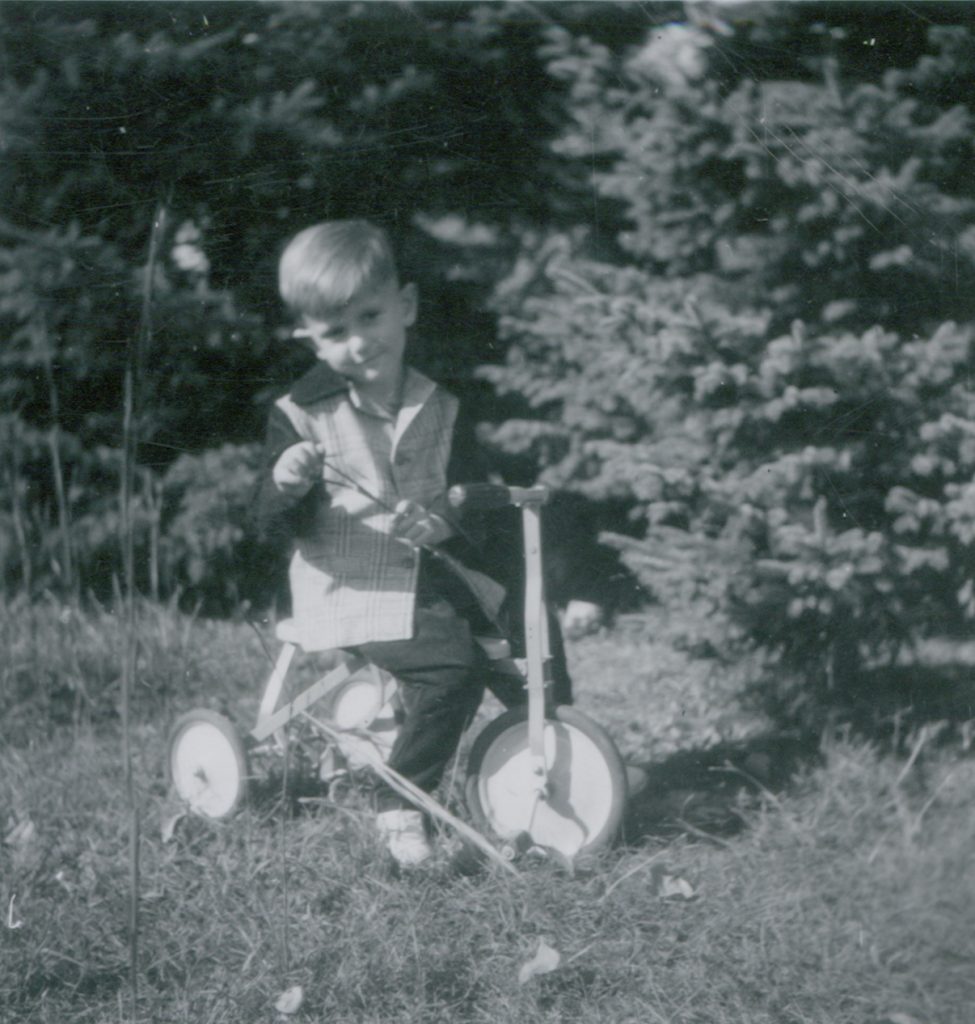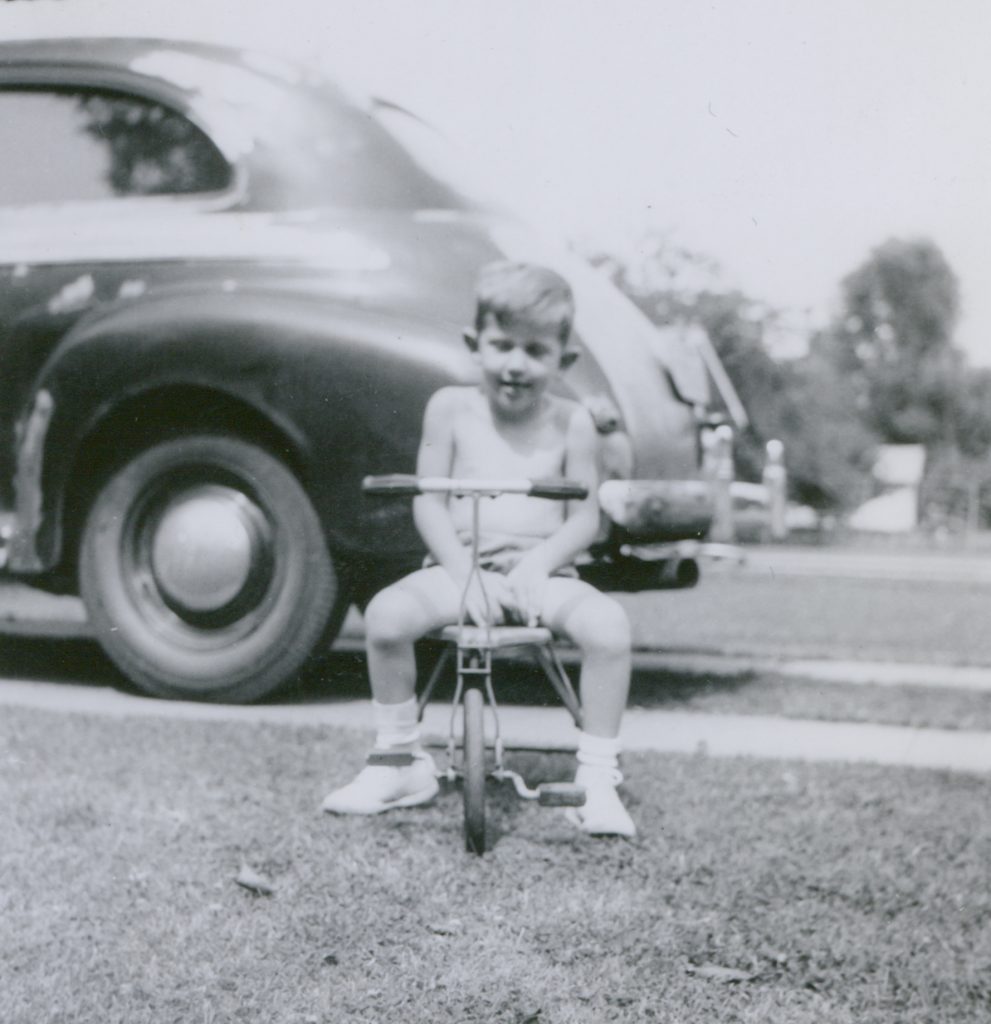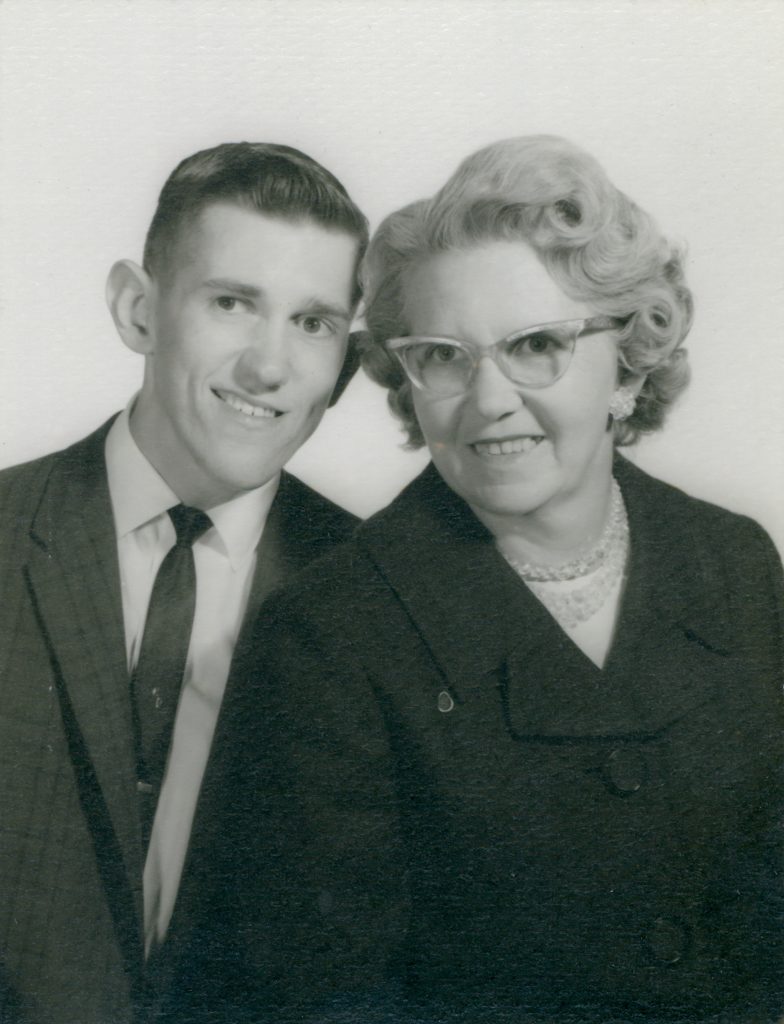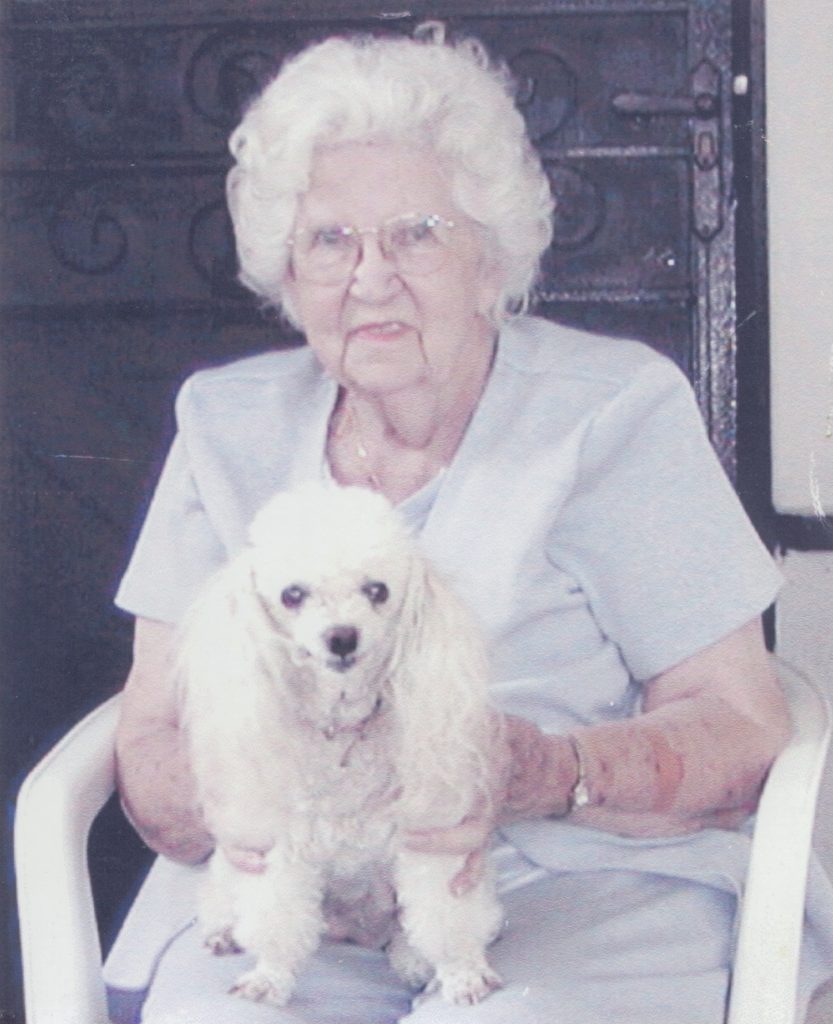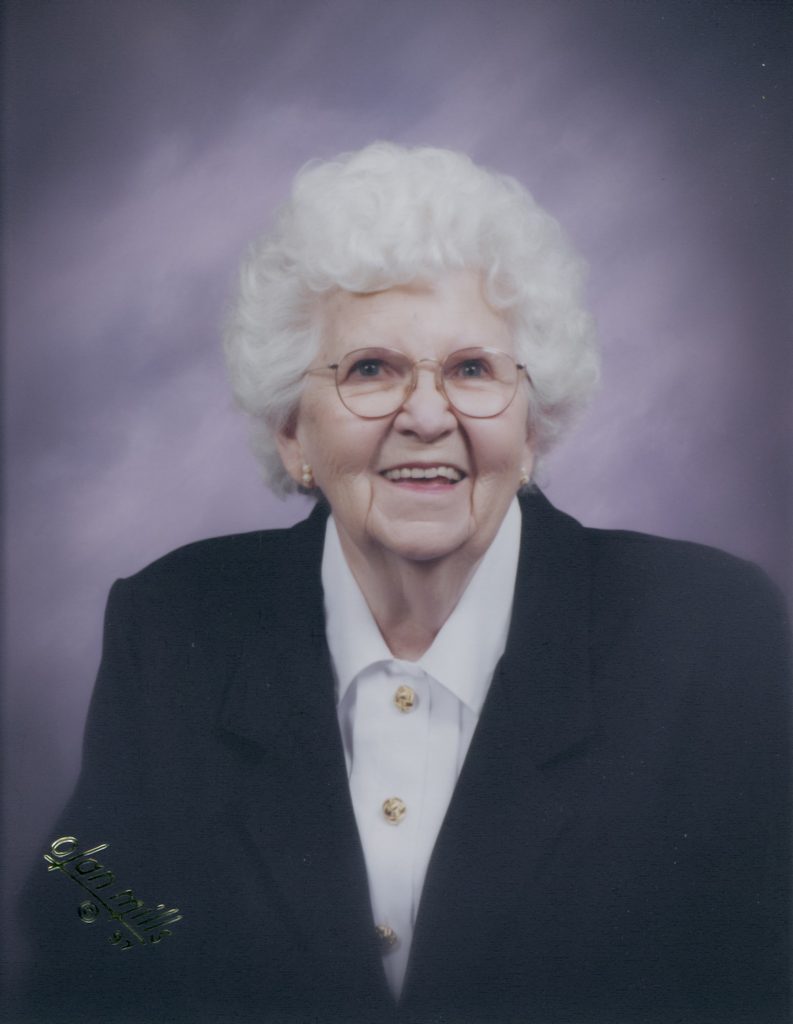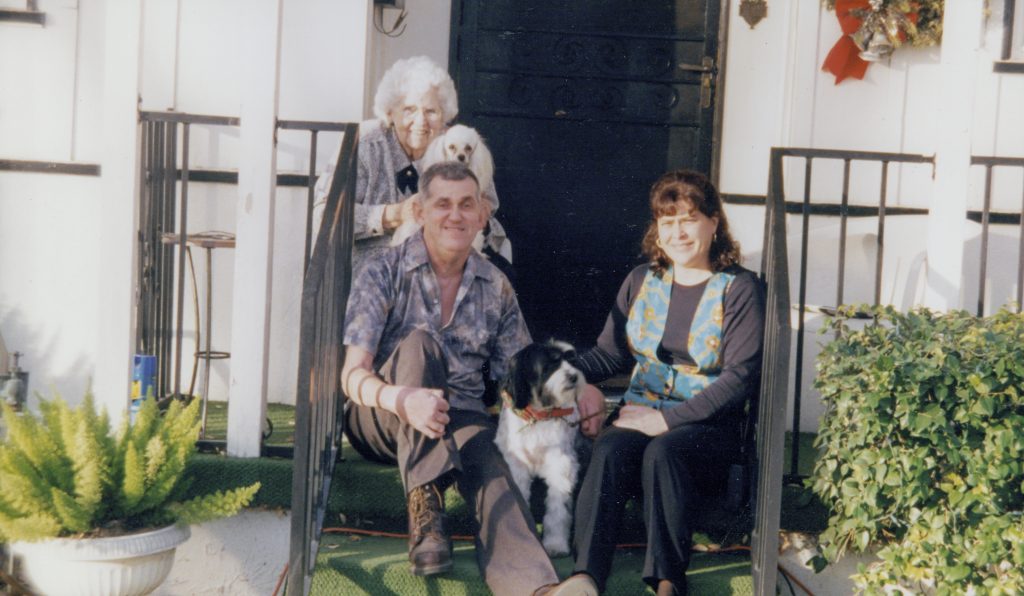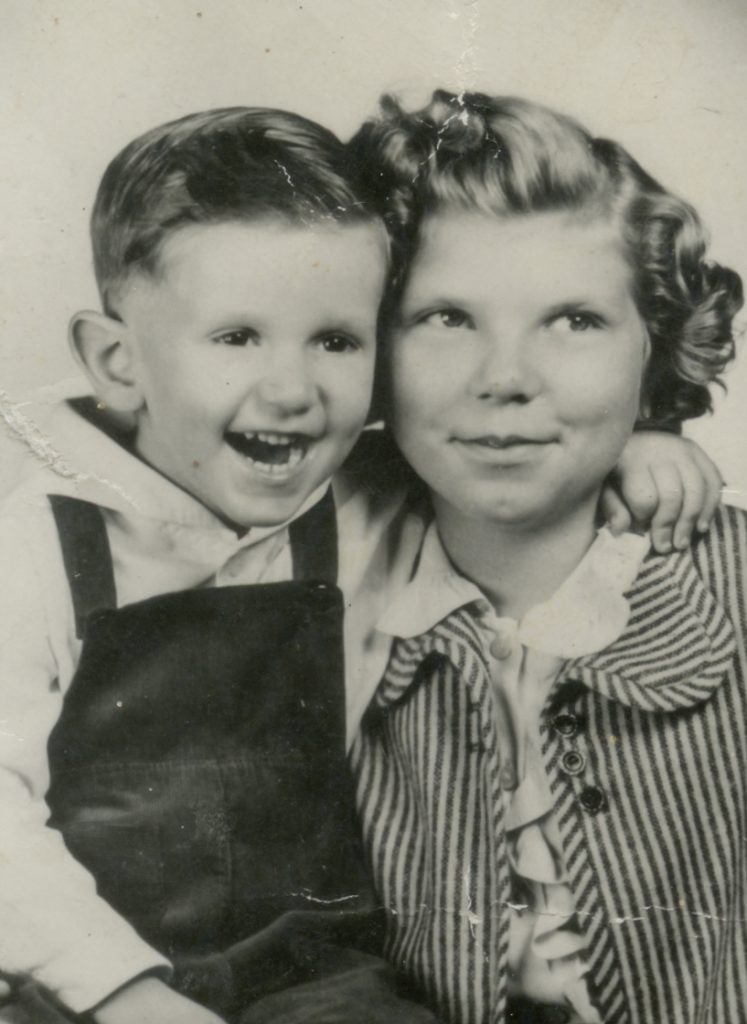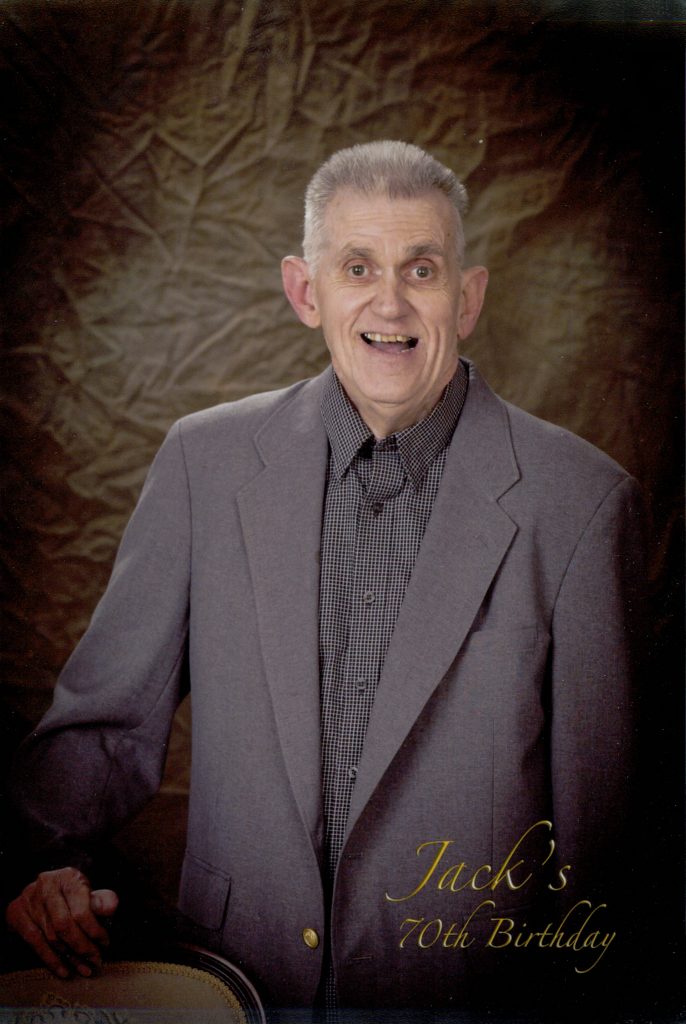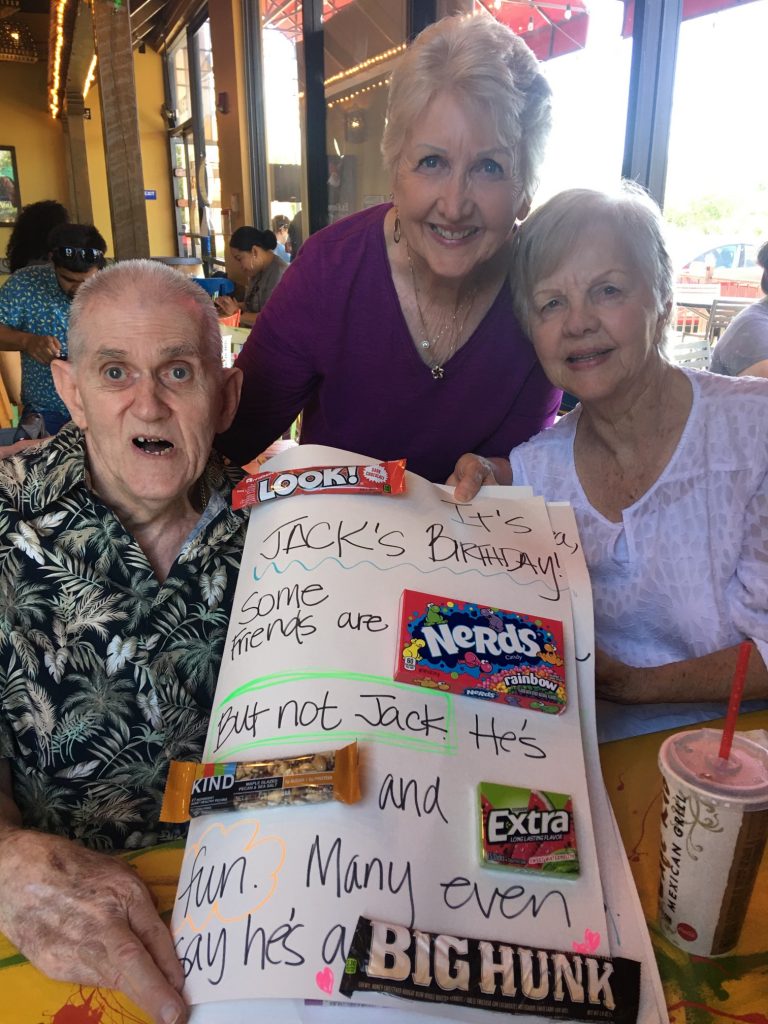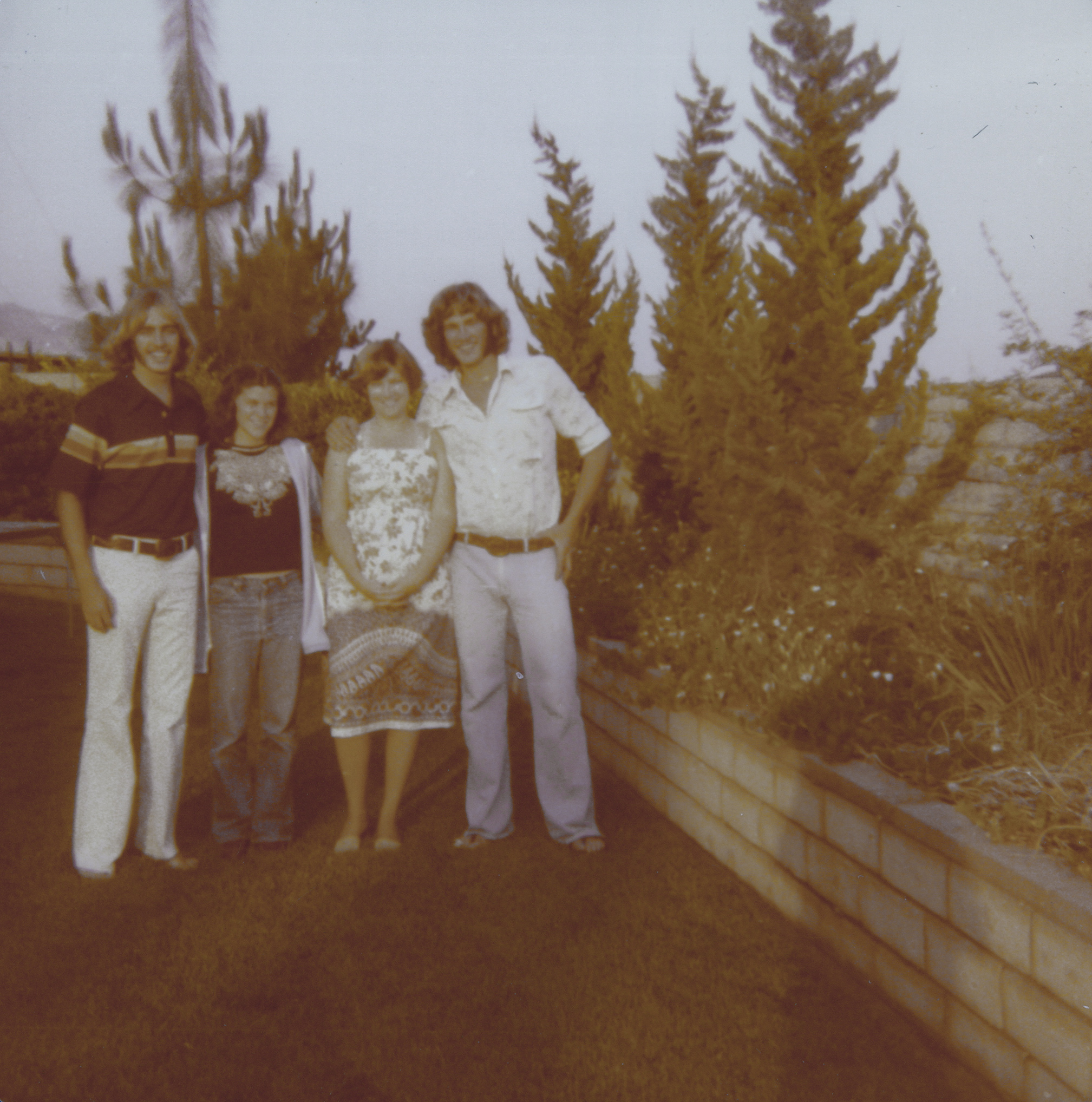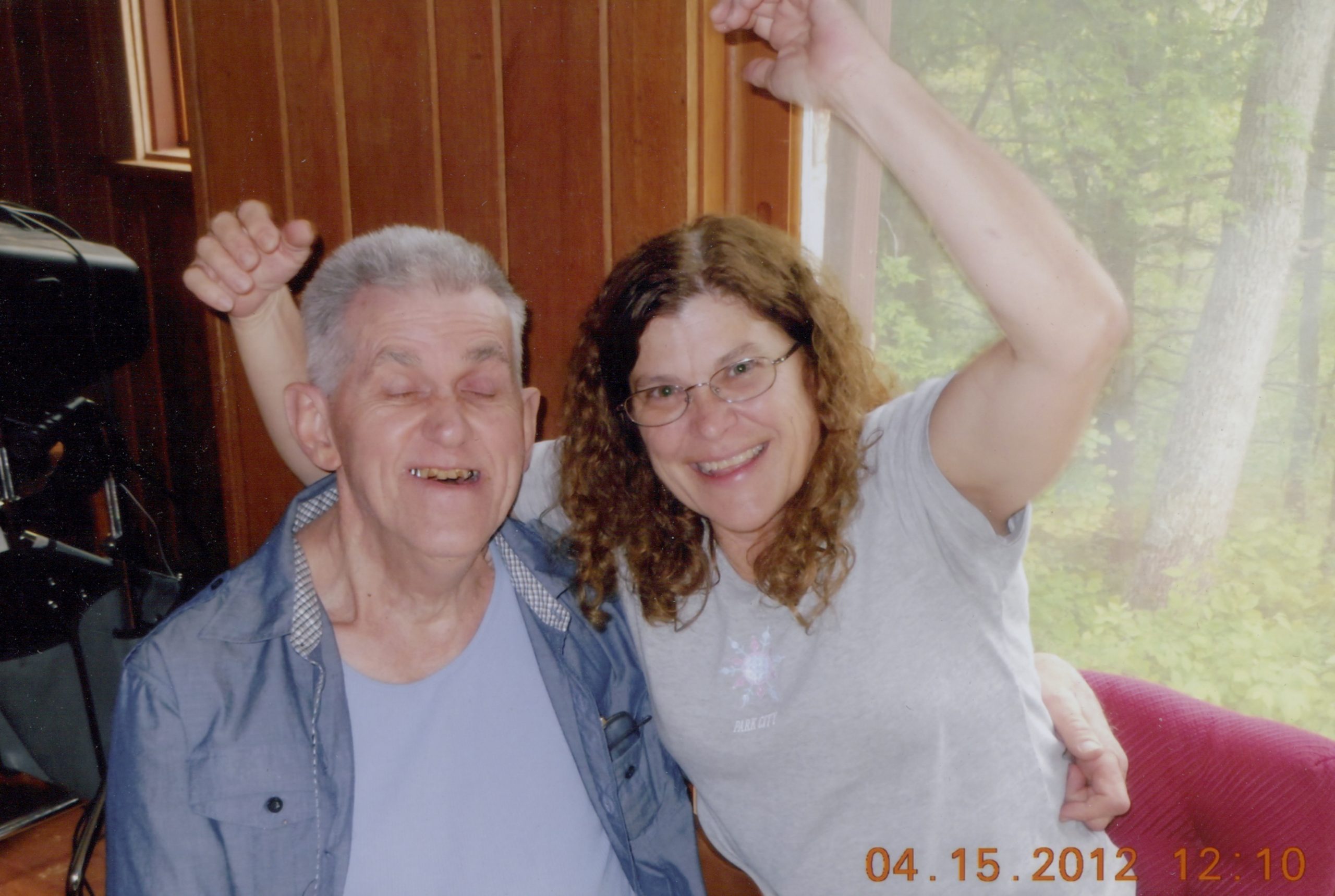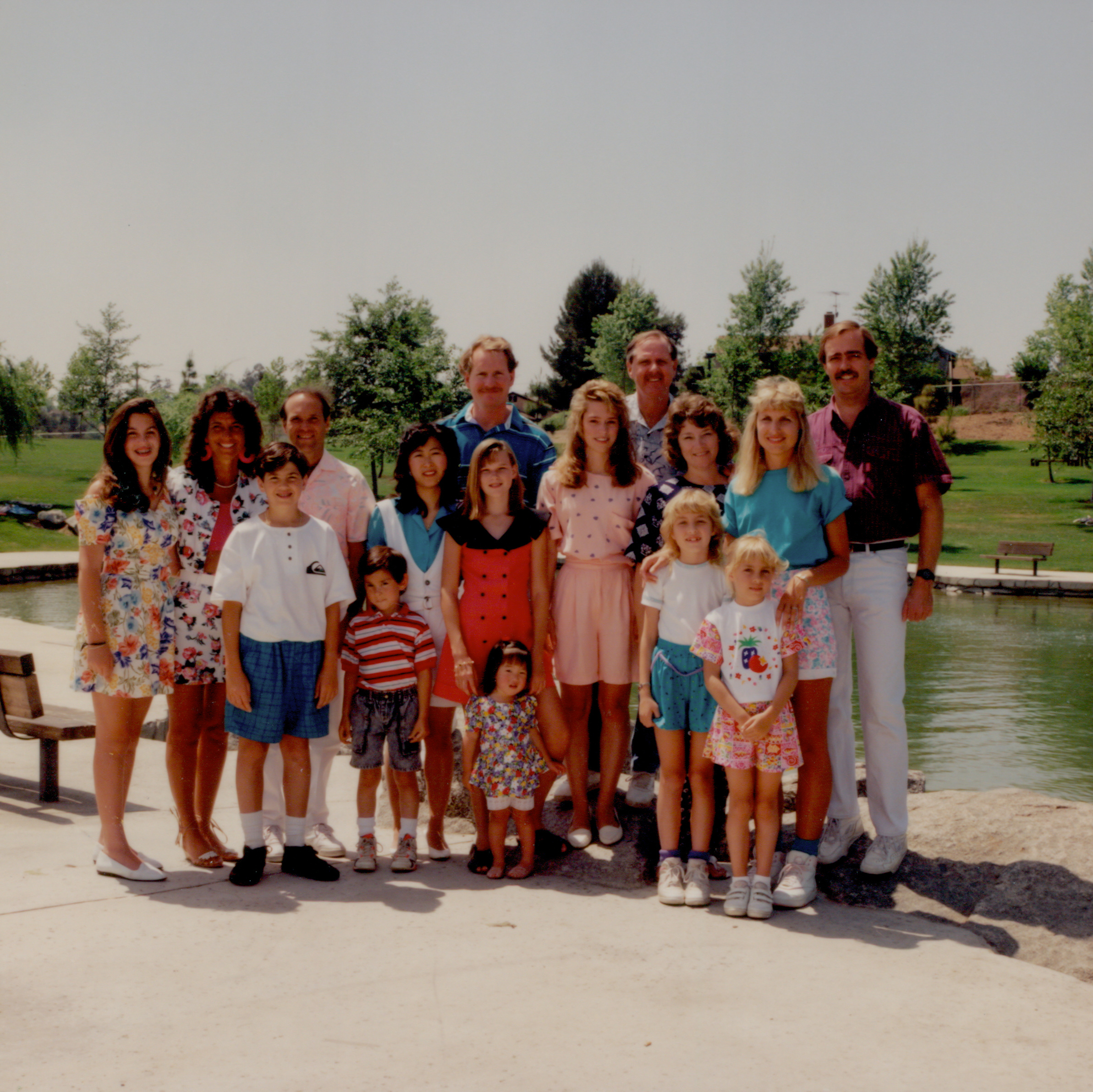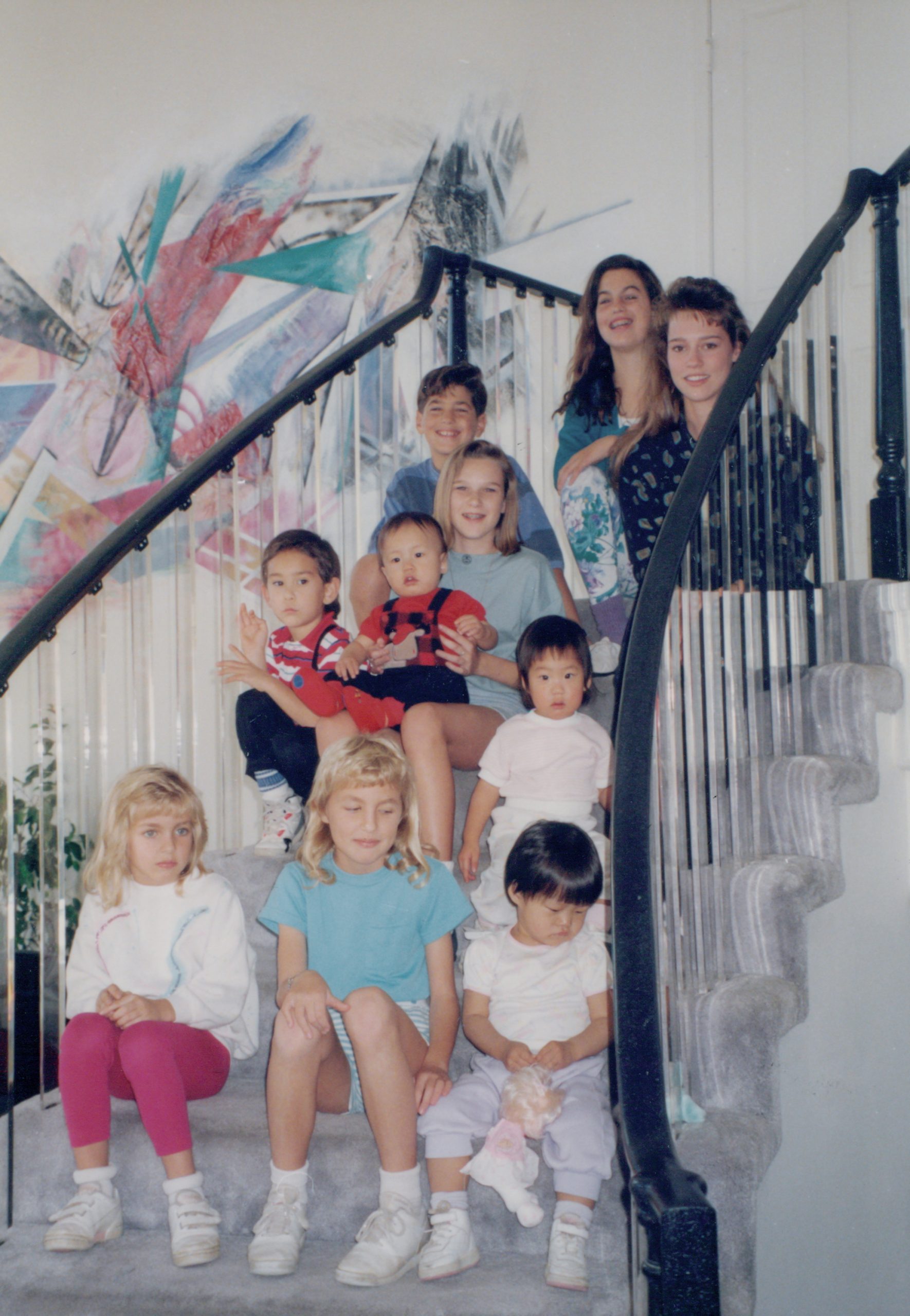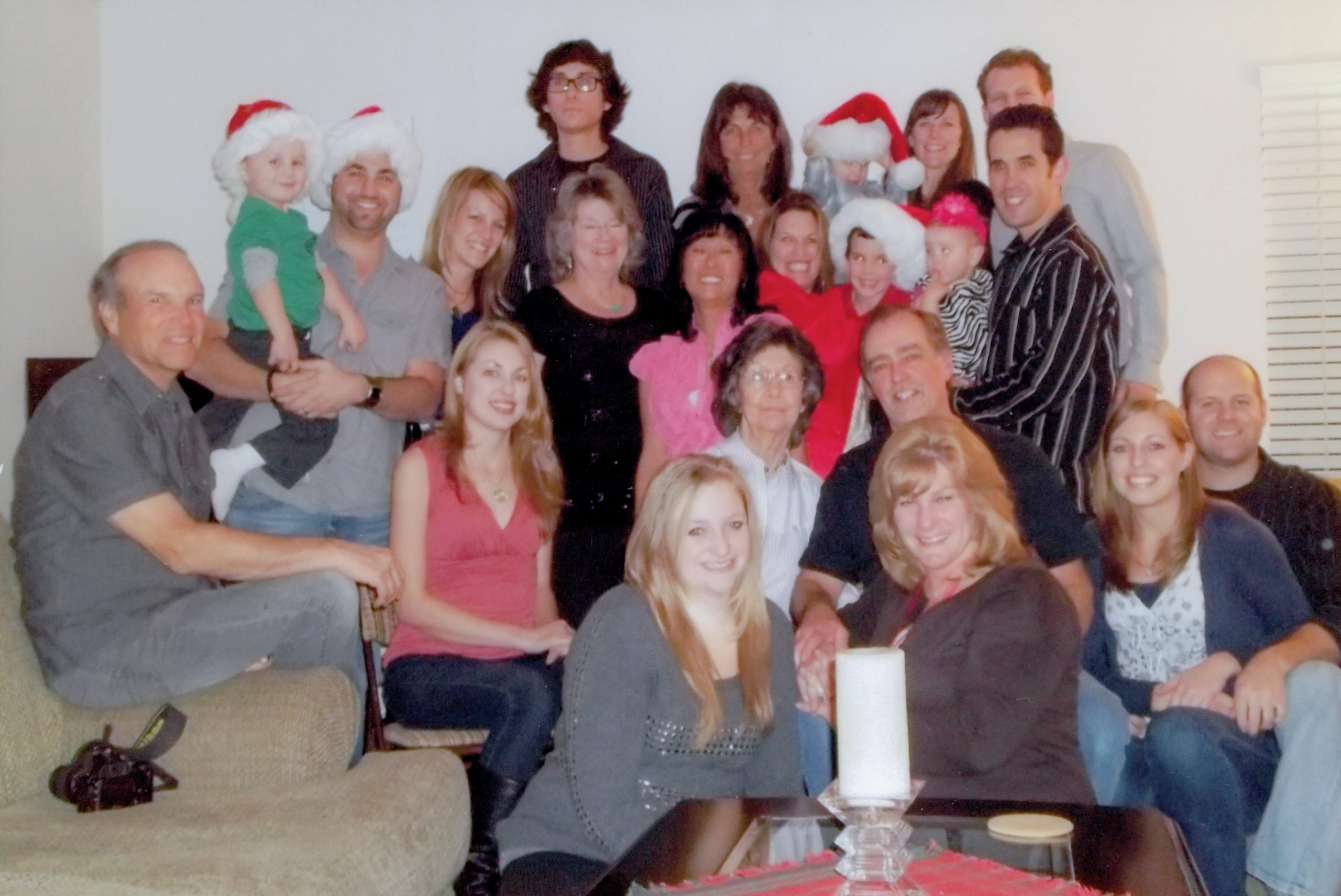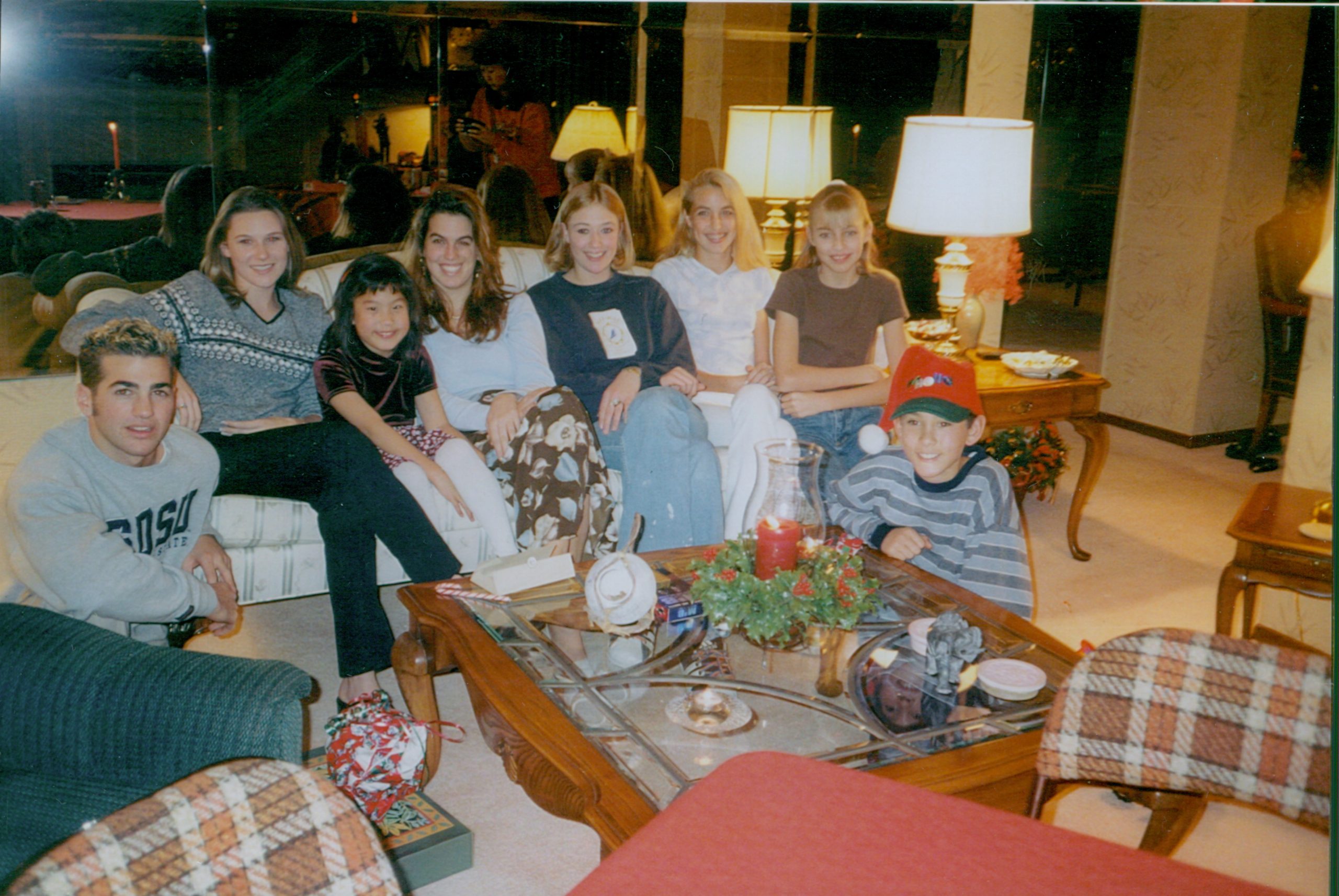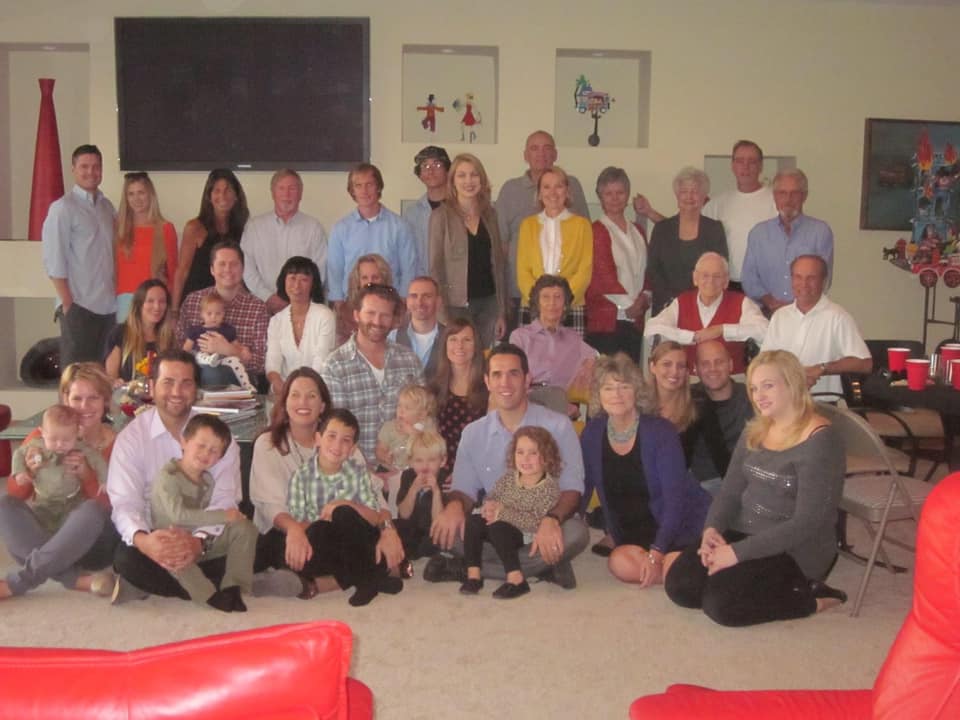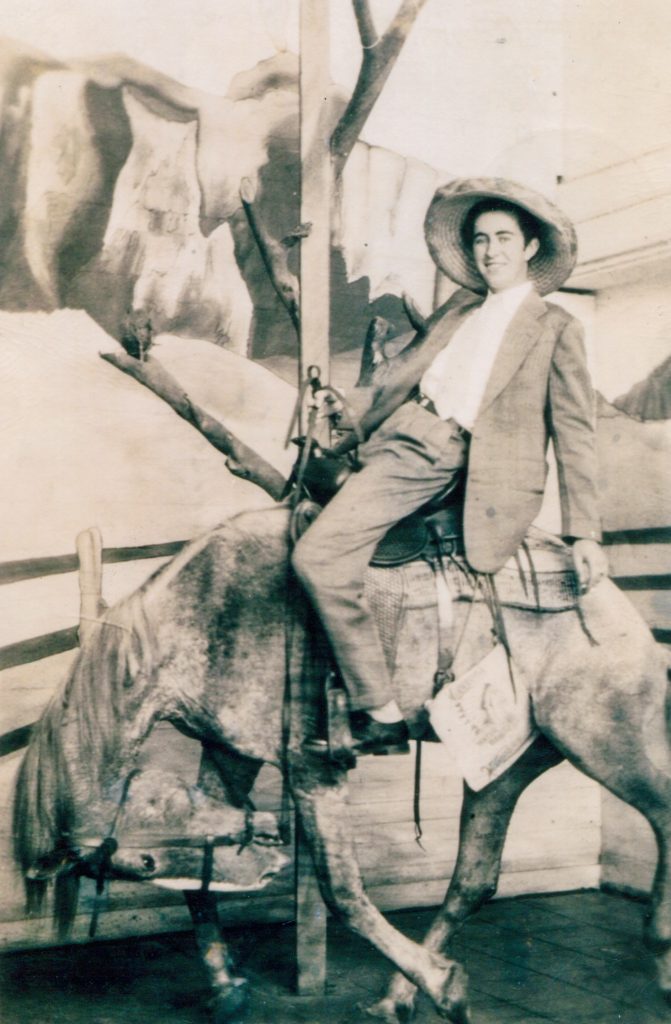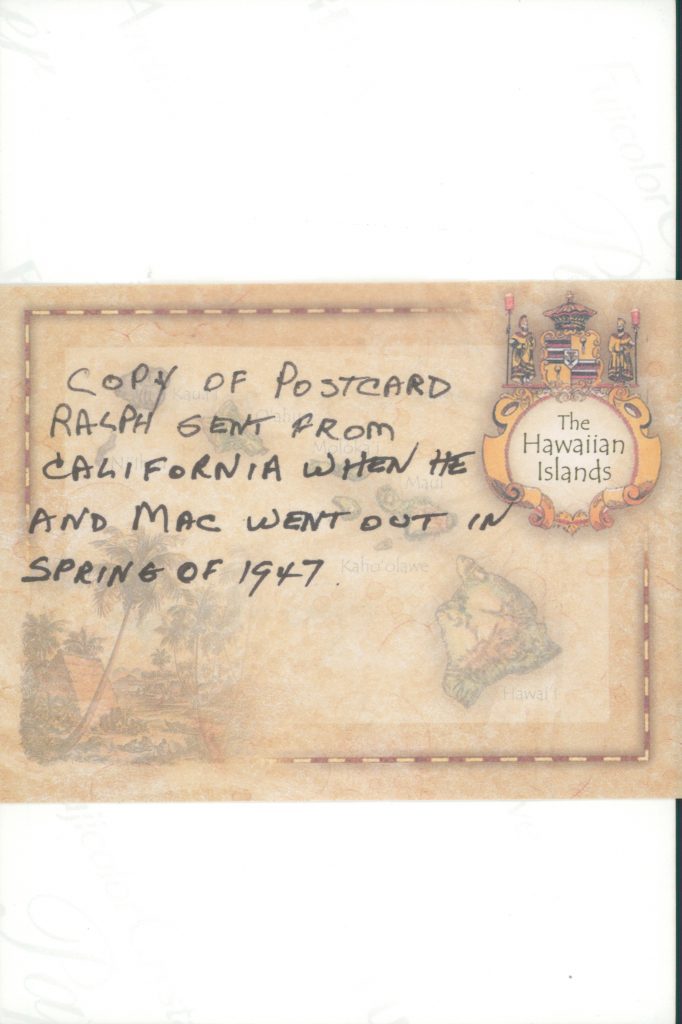The Heart of San Bernardino
By Carly Creley, Jack’s cousin, twice-removed
John “Jack” Harlan Wilson was a sharp-minded community leader with a tremendous, dry sense of humor. He set an example for everyone who seeks to use their abilities to create a positive impact on the world. Jack was born on June 10, 1943 to Calvin and Mildred Wilson in St. Louis, Missouri. He adored his elder half-sister, Jan, although neither Jan nor Jack would find out that she had been from their mom’s previous marriage until they were well into their adulthood.
Jack had cerebral palsy, which doctors told his mother was due to asphyxia during his birth. Today, however, we know that less than ten percent of cases are caused in this way. We now know that cerebral palsy often arises due to a series of causal events, with most cases stemming from a brain injury inflicted in-utero or before one month of age. Most cases after one month of age are due to stroke. It is far more likely in premature babies and in those with low birth weight1.
In the 1940s children with disabilities were almost always taken out of their homes. Parents were pressured to place their children in permanent care facilities, and those who chose to raise their children at home had few sources of support available to help their children lead full, productive lives2, 3.
Mildred, however, refused to let anyone take her son away. Mildred and Calvin learned of a center in San Bernardino, California that would provide support for Jack’s health while he lived at home, so they packed their bags and moved across the country. Although I cannot say for sure, it seems that the organization they found was (using the official vernacular of the time) the San Bernardino Crippled Children’s Society. It was founded by a group of businessmen from the Los Angeles Rotary Club looking to help children affected by polio before a vaccine was developed, and was an early leader in fighting for the right to equal treatment of those with disabilities. The March 12, 1959 issue of the San Bernardino Sun shows Jack doing crafts with an occupational therapist at the society’s “Crippled Children’s Center”. The society belonged to a “seals group”, meaning that it received funding through Easter Seals. Jack would give back by working for Easter Seals for most of his life. The Society has now become Ability First, and they continue the same mission to this day.
March 12, 1959
As World War II drew to a close, the rest of our family followed the Wilsons to California to work in the construction boom. Soon Jack’s cousins, Clarence McKean and Marilyn McKean McDill, moved to Pomona, along with Clarence’s wife, Sally, their daughter, Chris, and Sally’s brother, Ralph Hellebusch. Chris’s brothers, Kim and Shawn McKean (my father), would be born shortly thereafter. My generation, composed of Chris’s daughters, Joy Kirka and Jennifer Shovel, Kim’s daughter, Kelly McKean, and Shawn’s daughters, Carly McKean (me) and Chelsea McKean, came next.
In the 1940s, parents of children with disabilities began to organize and demand that their children not be institutionalized. Advocacy groups exploded in number, including power players such as The National Federation for the Blind, the American Federation of the Physically Handicapped, and, in 1946, the Cerebral Palsy Society of New York City4, 5. Several groups of parents with children with cerebral palsy joined forces in 1949 to create the United Cerebral Palsy Associations, Inc., which, together with the National Association for Retarded Children, was a major force in the Parents’ Movement that began in the 1950s5.
Schools were not required to admit children with disabilities at the time, but Jack was, luckily, able to attend Crafton Elementary. There, he made friends, including Ron Rostron, and the pair would remain friends for life. Unfortunately, they did not provide a proper education to kids with disabilities, but warehoused them all day. When Jack was in sixth grade, however, they got a new teacher. She got to know the kids and realized that, while they had physical disabilities, these children in her care did not have mental disabilities. Despite a lack of institutional support, she set out to teach them properly. Thanks to her progressive thinking, Jack graduated from Redlands High School and went on to earn an associates degree from San Bernardino Valley College. He always reflected on how lucky he was to have had that teacher.
It was not until 1972 that the courts, first in Washington D.C., and then in Pennsylvania, began to strike down laws used to exclude children with disabilities from public schools. It wasn’t until the Education for All Handicapped Children Act of 1975 that students with disabilities became entitled to a public school education in an integrated environment5.
During the 1950s, Jack’s mother, Mildred, was invited to compete on the very popular television show, “Queen for a Day.” In each episode, four women who had overcome significant challenges were invited to compete for the title of “Queen”, which was elected by audience applause. Mildred, rather than playing for herself, asked for gifts for the cerebral palsy group, such as equipment to take them on trips. She didn’t win, but, as someone who was so often without support, the acknowledgement of being selected must have been encouraging to her.
Jack’s father, Calvin, passed away from emphysema in 1961. Jack’s Uncle Warren McKean moved to California to help take care of Jack and Mildred. Warren normally worked setting up new Western Auto stores in Missouri, but he decided to open one in California so that he could move in with Jack and Mildred. He bought the last house they lived in, and stayed with them for the rest of his life.
As Jack grew up and entered adulthood in the 1950s, he developed a love of cars. His first was a mail truck because it was easy to step in and out. He owned a large number of cars over the years, and had a special knob installed on the wheel of each to aid his driving. He’d use his car to collect day-old bread from grocery stores on Sundays and deliver it to homeless shelters, the homes of those in need, and to centers for unwed mothers. When his cousin, Mindy McKean, joined him, he described their duo as parading around like “gangsters off the streets”, handing out gifts to endear themselves to the neighborhood. Even half a century later, I can truly picture these days–No matter how the world tried to confine him, Jack had a love of mischief and horseplay. When we were kids, he used to let my sister, Chelsea McKean, my cousin, Jennifer Shovel Bohler, and me ride his scooter around the long driveway in San Bernardino. We thought it was the most fun in the world!
In the latter half of the 1900s, the disability community created great change, and is still making progress toward equality today. Although people with disabilities endured terrible treatment, such as forced sterilization5 and lobotomies throughout the 40s and 50s, medical professionals started opting for medication and other methods of care over surgeries6 over time. The Social Security Amendments of 1950 established a federal-state program to aid the permanently and totally disabled, which would be a prototype for later programs such as Social Security Disability Insurance, created in 19565.
A big push against institutionalized settings came from conscientious objectors to World War 27, as they were often put to work in facilities to make up for staffing shortages. They attested to the cruel treatment of the residents7 and argued for their closure. In 1961 President Kennedy appointed a President’s Panel on Mental Retardation (again, the official terminology of the time) to develop reforms and improvements to the treatment of people with disabilities. In 1963 Kennedy addressed Congress and called for a reduction of hundreds of thousands of people confined to residential institutions over a number of years, and demanded that methods be developed , “to retain in and return to the community the mentally ill and mentally retarded, and there to restore and revitalize their lives through better health programs and strengthened educational and rehabilitation services.”5 Many hospitals and psychiatric institutions shut down between the 1960s to the 1990s, and were replaced by state funded programs and services that aim to address individuals’ needs on a case-by-case basis, with a focus on maximizing each person’s abilities, rather than attempting to cure the disability 6. Mildred was early in what became The Disability Rights Movement, whether she knew the name or not, and she found a support center that was foundational in the thinking as well.
Jack endured numerous surgeries from early childhood through adulthood. He was loved and treated well, but like most people with disabilities at the time, he was never seen by many others as a fully-functional adult. Despite this, he worked for Easter Seals, which had helped gather funding for the organization that helped him throughout his youth. Mel Upp, his former Scoutmaster, who ran a troop based in Easter Seals, hired him to manage three departments: loan equipment, transportation, and recreation. He worked with his friend Leon Green to deliver beds, wheelchairs, walkers, and other items for temporary use to those in need. His work to create amazing opportunities for those with disabilities was relentless. He organized trips to Disneyland, Sea World, San Francisco, and everywhere else you could imagine. He even took over the Boy Scout troop. At Jack’s insistence, Mildred recorded the pledge of allegiance for them so that the boys wouldn’t repeat his slurring language. His favorite activity, however, was organizing the San Bernardino Mens’ Handicapped Bowling League.
His cousin, Mindy, used to go with him from time to time. It was during one of his weekly bowling games in 1993 that he met Rheba Hewitt, who would become a friend for life. Rheba was there to have her ball redrilled and saw the group of men: Jim and Ron were in wheelchairs; Billy had to throw the ball with both hands; and Leon threw the ball really hard. Jack had trouble walking, as his foot and hands were malformed, but he was carrying ball after ball from the return line to three of the other men. As she watched, she thought, ‘Eee gods! He’s going to take the balls to and fro for three games!’
Since she didn’t have anything to do, she walked up and said, “Hi, can I help you?” Jack was so friendly and nice, so she made him a deal that she would take the balls for two of the players, and he could continue to take them for the third. They shuffled back and forth all afternoon, telling jokes and having fun. The men teased Jack about loafing on the job, using their dry senses of humor to dig at each other as they always did. A week later, she had nothing to do, and realized it was the group’s bowling day. She went back to the alley that Tuesday afternoon, and continued to go every week for the next 13 years.

Jack Wilson, Leon Green, Billy, Billy’s Mom, Name Unknown, Ron Rostron, Jim
Jack, Rheba, and Ron developed a close friendship, which grew during post bowling lunches every week. For years the three went to the big Route 66 Festival in San Bernardino, sometimes with Leon or some other friends along. They loved to see the big cars, and had great fun talking to all the people. Sometimes Jack would use a wheelchair so that he could keep up with Ron in his motor chair. They’d take off at top speed and leave Rheba in the dust. When she finally caught them, they’d all end up laughing the day away. They all loved to bowl and they all loved to eat, so they’d make sure to plan all of their outings to include lunch or dinner.
Jack lived in his own home, and was an active member of the community his entire life. However, when his mother died at age 91, he lacked the ability to care for himself in basic ways. He asked Rheba to help him with his finances, and said he didn’t know what to do with his mom’s checkbooks, how to pay the bills, or anything in a similar arena because kids with disabilities weren’t taught such skills during his childhood. It took a lot of encouragement to get him to go out to eat at a restaurant alone for the first time, as he had to ask the waitress to cut his food up for him.
Mildred always told Jack that when she died he’d have to go live in a retirement home, as he wouldn’t be able to afford full time help. However, Rheba went through his finances and documents piece by piece for two or three months. She kept finding CDs that Mildred had purchased anytime she had extra money. Many of them had been sitting scattered in a variety of banks since the 1980s, when interest rates were 16-18 percent. Added to the savings from his mother’s work in the lingerie department at Harris’s Department Store, her time at Taco Lita, and his father’s work at Kaiser Steel in Fontana. All in all, he had a total of $250,000. Rheba set him up with a financial advisor, so that he could remain in his own home for the rest of his life. It seemed to them like a magical thing. They were always having those magical moments — and then they’d eat.
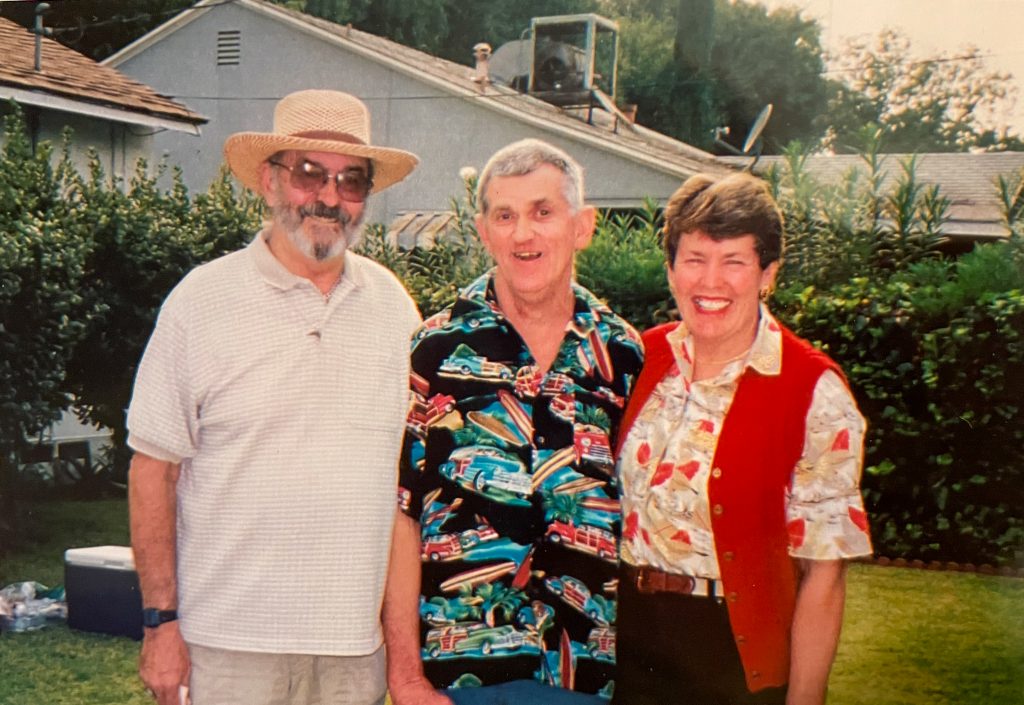
The trip to see the financial advisor was very special for them. Jack was perfectly capable of going by himself, but going together was a great excuse to go have a good meal. After the meeting in Orange County, they stopped at San Clemente Beach and wanted to eat at the restaurant on the pier. Jack was thrilled that they found a parking place right in front. They walked on the beachside trail and revelled in watching a big group of seals, with kids playing all around. They came up on a group of people fishing on the beach, and Jack asked one of them if they had caught anything. The guy shrugged no, but got a bite right at that moment! He pulled in a nice sized fish, plenty big for four people’s dinner. Everyone was so excited that he caught a fish right then. During dinner, they sat on the pier and watched the seals all around them, then walked around the pier and saw a pod of dolphins right below them. The dolphins played for 20 minutes or more, and a huge crowd gathered to watch the magical moment. From then on Jack and Rheba always said, “Remember San Clemente Pier,” when they were feeling sad or bored.
Although he had physical disabilities, Jack had a very sharp mind, and a tremendous sense of humor. He kept up his visits with his best friend, Bob Yohn, from San Bernardino First Assembly Church his entire life. He kept an 8.5×11 picture of his sister, who died in a car accident in 1958 at the age of 23, by his side at all times. He missed her so much, and always wondered what his life would have been like if she were still around. He was great friends with Kathy Stebbins, who cared for Ron, and had been his caretaker for a few years as well. He was very religious throughout his life, and had a very close friendship with fellow parishioner Marge White. His 70th birthday party, organized by Bob, had over 100 guests. Everyone brought cookies, his favorite dessert, in lieu of gifts, and then feasted on them like they were going to use up all the milk on Earth. It was the perfect showcase of how many people loved and cared for Jack, how many people he’d touched over the years. Everyone knew Jack as kind, funny, and always smiling. His notepad read, “Deep thoughts from the shallow mind of Jack Wilson.” After any visit, when his guests said they had better get going, he would respond with, “Oh good,” as if he’d only been putting up with them the entire time. No laughter, no smiles, just his dry sense of humor to end the night.
Jack was an active member of the Rotary Club, which he felt was the only place he could be surrounded by male friends. He had longed for some male companionship, but knew he wouldn’t fit in drinking beer and watching football. As a public service organization, the Rotary Club accepted him and were glad to have him as part of their group. They made him the attendance keeper, and he loved contributing to the positive work that they do. He said he never loved anything so much in his life.
Today the Disability Rights Movement continues. The Americans with Disabilities Act was finally passed in 1990, which required things like wheelchair ramps and handicapped stalls in restrooms. Jack had accomplished so much without even the most basic accommodations, but this only made him more happy to see the changes. His one unrealized wish in life was to be a city council member, but he felt he couldn’t run because of his speech. It was San Bernardino’s loss. In 1996 Bob Dole became the first person with a visible disability to run for president since Franklin Delano Roosevelt, but, unlike Roosevelt, he didn’t hide it5.
Like so many people who follow him, Jack used his abilities to help others, and build a strong community around him. He brought my family to California, and set us up for the alchemy that would make every branch of our family, and would make us. Jack died of Covid-19 on December 16, 2020, the same day that the first vaccination was delivered in California.
He would have been a fantastic city council representative.
________________________________________________________________________________________
____________________________________________________________________________________________
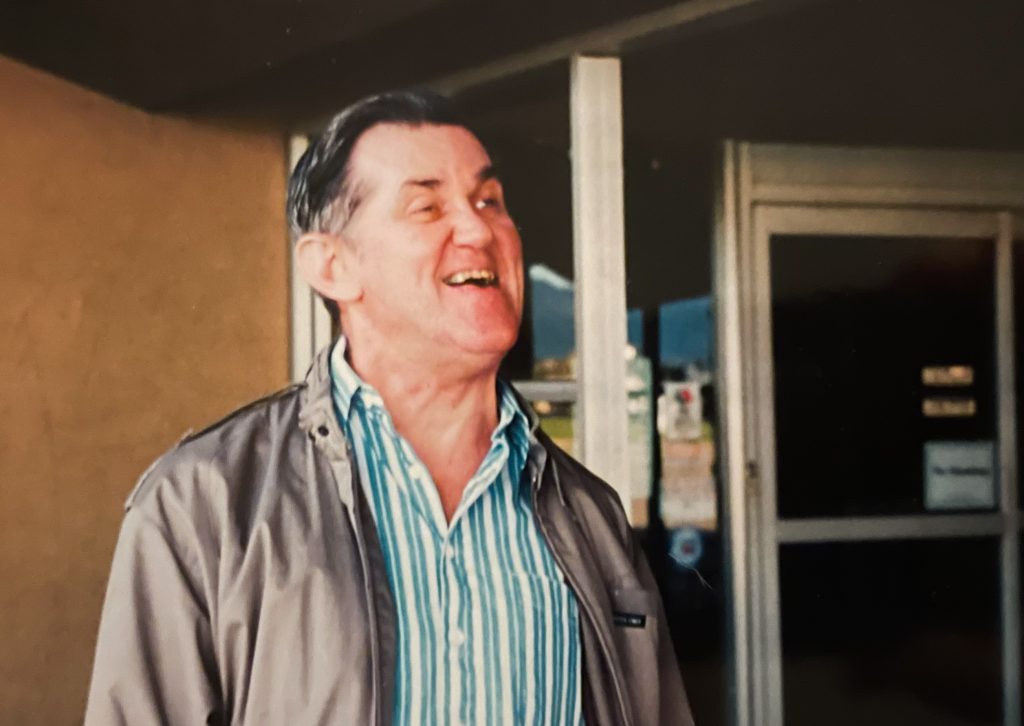
1943 – 2020
____________________________________________________________________________________________
- Cerebral Palsy Alliance. “What Causes Cerebral Palsy?” Cerebral Palsy Alliance. Cerebral Palsy Alliance, 2018. https://cerebralpalsy.org.au/our-research/about-cerebral-palsy/what-is-cerebral-palsy/causes/.
- “Our History.” United Cerebral Palsy. United Cerebral Palsy, July 23, 2019. https://ucp.org/our-history/.
- United Cerebral Palsy, and Ancor Foundation, The Case for Inclusion Report § (2019).
- Disability History: The Disability Rights Movement §. Disability History (2019).
- “Timeline.” The Disability Rights and Independent Living Movement. University of California, Berkeley, July 14, 2004. https://bancroft.berkeley.edu/collections/drilm/resources/timeline.html.
- Disability History: Early and Shifting Attitudes of Treatment §. Disability History (2017).
- “Disability History Exhibit.” Disability History Exhibit: Panel Content. State of Alaska Governor’s Council on Disabilities and Special Education. Accessed April 22, 2021. http://dhss.alaska.gov/gcdse/pages/history/html_content_main.aspx.
- “The San Bernardino County Sun from San Bernardino, California on March 12, 1959 · Page 52.” Newspapers.com. The San Bernardino County Sun. Accessed May 2, 2021. https://www.newspapers.com/newspage/51792043/.
Special thanks to Chris Shovel for her endless support providing photos, stories, and genealogy for this work. Thanks to Rheba Hewitt, Mindy McDill, Marge White, Kathy Stebbins, Chelsea McKean, Jennifer Shovel, and Sue Ann Cross for sharing stories, memories, and photos.
Thanks to the City of Los Angeles’s Department of Cultural Affairs for making this project possible through the Arts Activation Fund – Corona Memorials Project.
